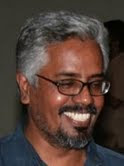Life and Times of Marriage Videos
When television came, it brought to us images and visions of the remote and the faraway. It very quickly invaded our drawing rooms, erasing boundaries and barriers – personal, familial and social. It was as if the silver screen had exploded into bits and these little shiny bits have fallen into each home (the way Kamal Swaroop, the filmmaker described the phenomenon). In those days Doordarshan was the only channel and it beamed 'national' images and narratives which we, the locals, watched and consumed with great awe. The rural population for the first time witnessed 'first hand' the urban ways of life and the luxuries 'they' splurged in. This opening up of the horizons of vision had great sociological impact, radically changing the rural-urban dynamics in India. This process was enriched and accentuated by the coming of satellite television and the opening up of the sky which gave 'local' content and expression much more visibility and freedom.
But there is one area which pundits often ignore or miss. And it is an area in which the local was being reproduced and re-presented visually for a long time – the local marriage videos. They were the extensions of the old 'photo studios' and the VHS rental shops, and they recorded and later edited marriages and other local functions. Suddenly we turned into heroes and heroines (though for a single day, that of marriage). Every home had its VHS cassettes of marriages in the family along with the photo albums. The marriage functions were re-organised and sometimes re-staged for the benefit of the videographers, who were becoming a star attraction as well as status markers. His (it was invariably a he, for one never saw a woman videographer covering a marriage) position became more prominent than that of the priest or the parents. And it was he who graced the occasion with his luminous presence and 'blessed' the couples with light and 'longer life' in posterity virtually. Often, the videographers of both the parties (that of the bride and the groom) vied with each other to 'capture' the event and to occupy the vantage positions, something that also showed which 'party' had more social and economic status.
In response to the changed scenario, the nature and conduct of marriages themselves began to change. Video became part of the ritual and the events were re-designed to suit its dictates, and the 'elders' and the priests faded into insignificance before it. The 'simple' marriages were the first casualty, for it fell out of favour with the videographers, who needed 'events' and 'episodes' (like that of the Tamil Brahmins etc) as footage for editing later. With no elaborate rituals to show, they took the couple – who most often were in such proximity for the first time in their lives – to scenic locations and made them to pose and act before the camera (the irrepressible director in each videographer letting himself out). Video coverage of marriage was not just a personal affair or record but also a social statement. In the word of Shuddhabrata Sengupta, " Wedding as an event allows for the greatest degree of social consolidation to take place within the briefest time. In each of its aspects, a wedding in a family sends out a series of messages to the world. The kinship network gathers, ritual hierarchies are asserted, economic power is displayed and prestige is at stake. Who marries whom signifies immediately a wealth of details about the social status of the two parties. How much is spent on the wedding, who is invited and who left out, what kind of decorations, who wears what, and how much jewellery is displayed, what kind of catering arrangement, the fidelity to the entirety of the marriage rituals, the items of dowry and the scale and number of gifts – all of this in a very abbreviated time, tells us everything there is to know about a family's place in the world. Hence the investment in keeping as detailed a record as possible of the event itself" (, The Video-walla's Images of Life)
It would be interesting to see how marriage videos in Kerala evolved through time. Recently a 'marriage-videographer' when I asked him about his profession told me: "I cover marriages" Before a derisive smirk began to spread on my face, he added, "but I am not like those ordinary guys. In my marriage-videos, the event of marriage is only a culminating moment. The rest of the video is about the childhood and youth, family, school, college, friends and extracurricular activities of the couple. It 'covers' their lives until the marriage". It sounded very interesting and innovative. It is sad that marriage videos are seen only by the 'interested' parties and are not archived. Obsessed with the printed word, we care a damn about these rich social records.
It is high time that we had a 'Festival of Marriage Videos'


0 Comments:
Post a Comment
Subscribe to Post Comments [Atom]
<< Home